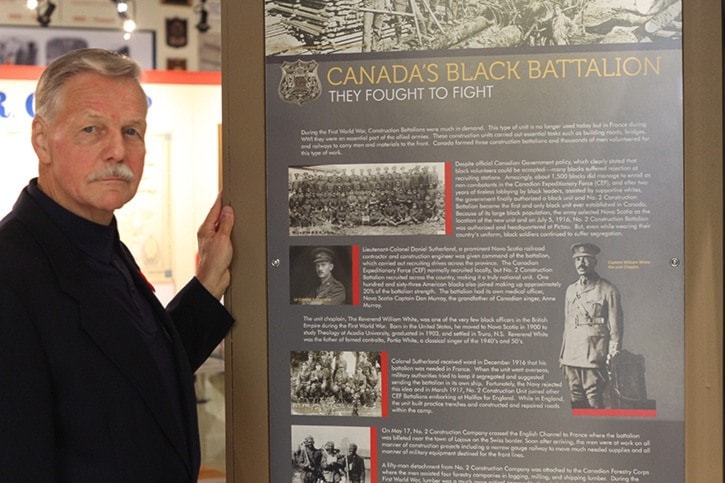Thousands of Black Canadians went to enlist during the outbreak of the First World War, but the majority faced discrimination and were rejected by recruiters.
“Even though the Canadian government said there can be no discrimination, the army wouldn’t let them fight,” said Brian McFadden, vice-president of the Vancouver Island Military Museum.
It wasn’t until April 16, 1916, that the Canadian Militia Council, under pressure from politicians and the black community, authorized the formation of a special unit called the No. 2 Construction Battalion to allow black Canadians to serve, according to the Black Cultural Centre for Nova Scotia’s website.
The battalion was a non-combat unit, which worked on construction projects to help with the war effort, including digging trenches and working in forestry.
“Most people have no idea what these fellows went through. All they wanted to do was sign up and fight for their country,” said McFadden.
The Vancouver Island Military Museum has created an exhibit called Pride and Prejudice for people to learn more about the battalion’s history.
“They were fighting for recognition,” said McFadden.
Members of the battalion were recruited from across the country. McFadden said the majority of the unit hailed from Nova Scotia because there was a large black population in the province that had moved there from the United States.
The battalion was headquarted in Pictou, N.S.
The majority of officers for the No. 2 Construction Battalion were white. It was led by Lt.-Col. Daniel Sutherland, a railroad contractor and construction engineer from Nova Scotia.
The unit chaplain, Rev. William White, was one of only a few black officers.
The museum’s exhibit says that in 1916 Sutherland received orders that the battalion was needed in France, but the military wanted to keep the soldiers segregated. The navy refused and the battalion headed to England before France to practise building trenches and repairing roads.
Some of the battalion members were later transferred to forestry units to cut and mill timber for trenches, encampments, repairing railway lines and other military uses.
McFadden said there were some Black Canadians who did get into the regular military during the early years of the war, but it was very few.
“[Soldiers] didn’t care who was beside them with a rifle; if they were helping out, they were happy with that, but the establishment didn’t want them mixing,” said McFadden.
Canada Post honoured the battalion earlier this year with a stamp during Black History Month.
The stamp used an archival photograph picturing some of the members of the unit against a background of tall conifers with members of the forestry crew to represent the trees the men felled in regions of France.
“The battalion’s creation is a story of persistence in the face of adversity,” said Judy Foote, minister of public services and procurements, in a Canada Post press release. “They helped to pave the way for later generations of black men and women and people of all diverse races to serve in Canada’s army, navy and air force.”
People can view the stamp at the exhibit or purchase one from Canada Post. For more information about the exhibit, please call the museum at 250-753-3814.
